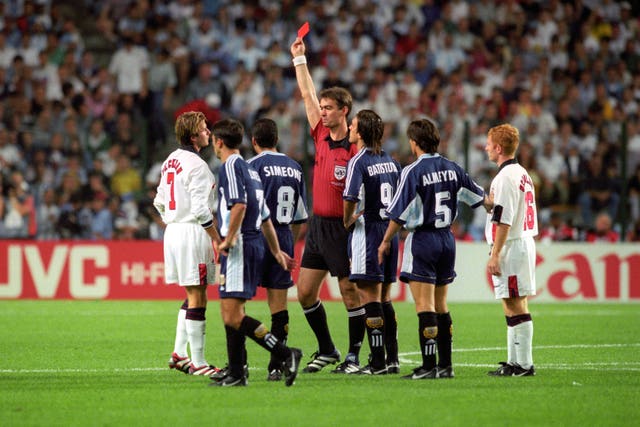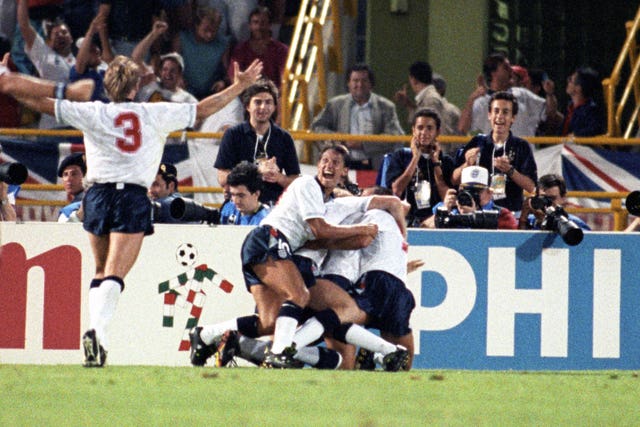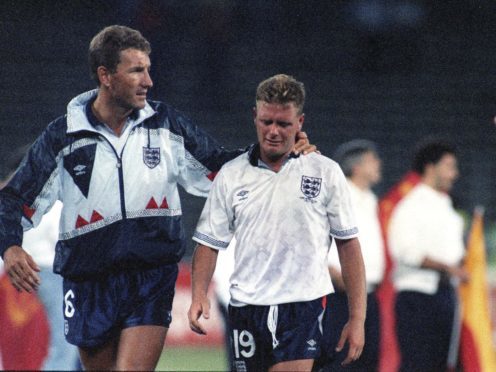England’s World Cup quarter-final match with Sweden on Saturday is likely to be seen on TV by millions of people – but what are the numbers it needs to beat to become one of the most-watched games of all time?
Here are the biggest TV audiences for England World Cup matches since current records began.
The figures are for the average audience across the whole coverage, not the peak number of viewers watching at any one point during the game.

1. West Germany v England, 1990: 25.2 million
Not only is this the biggest ever audience for a World Cup match, it’s also one of the most-watched live events in UK history.
England’s semi-final with West Germany was shown by both the BBC and ITV, the BBC beating its rival by two to one (16.7 million watched BBC One, 8.5 million ITV).
When the match went to penalties, half the nation was in front of a television to see England lose the shoot-out 4-3.
Among those unable to watch the game were prisoners in Wormwood Scrubs, who were allowed to listen on radios in their cells, and the Prince and Princess of Wales, who were hosting a concert at Buckingham Palace. Diana reportedly announced the result to guests, concluding: “I’m reliably informed that Pearce and Waddle missed.”
2. Argentina v England, 1998: 23.8 million
Another crucial match settled by penalty kicks.
England’s Round of 16 clash with Argentina gave ITV its largest ever audience for live sport, as once again millions watched England go out of a World Cup after losing a shoot-out 4-3.

3. Cameroon v England, 1990: 23.6 million
Back to Italia ’90 for England’s quarter-final match with Cameroon, which England won 3-2 after extra time.
The game was shown by both the BBC and ITV, with 15.7 million watching BBC One and 7.9 million choosing ITV.

4. Romania v England, 1998: 19.5 million
This was England’s second group match of the 1998 tournament, and ended in a 2-1 defeat.
The evening kick-off helped ITV pull in a massive audience.
A few days earlier, England’s first group match against Tunisia had attracted only 11.4 million – but that had kicked off in the afternoon.

5. England v Belgium, 1990: 19.3 million
England’s Round of 16 match at Italia ’90 was shown by both BBC One and ITV, who got audiences of 13.3 million and 6.0 million respectively.
England clinched a 1-0 victory after extra time.

Here is the rest of the top 10:
6. Italy v England, 1990: 19.2 million (12.5 million BBC One, 6.7 million ITV)
7. Colombia v England, 1998: 19.1 million (BBC One)
8. Sweden v England, 2006: 18.5 million (ITV)
9. Germany v England, 2010: 17.5 million (BBC One)
10. Colombia v England, 2018: 16.5 million (ITV) (provisional)
Note: all figures are from Barb. No comparable ratings were compiled for UK TV channels before 1981. Any viewing figures quoted for matches taking place before this date, such as the 1966 World Cup final, are not reliable and should be treated with caution.
